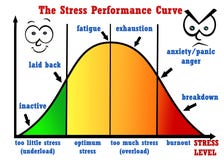We’ve all heard of
the central nervous system but I don’t think we all know that it’s the
efficiency of the CNS that’s decides what we do, when we do it and how hard we
do it.
It is also affected
greatly by fatigue, especially when using intense and/or high fatigue training
models.
FYI, training
intensity refers to the % of your maximum that you are training at.
Fatigue
refers to how much energy resources you use to complete a set task.
Lifting 3
reps at 90% of your maximum is intense, it’s 10% off your max obviously.
Training to the
point that you cannot walk is actually work performed at a moderate intensity repeatedly.
Intensity of a session should never be determined by how tired a workout made
you feel during and after it.
If you have induced
a relative high amount of fatigue through moderate intensity but high volume and incomplete rest, then that will take far more time to recover from high intensity, low volume training.
Intense but short duration activities will also cause
great stress on the CNS but it spares the metabolic cost that comes with high
fatigue training.
Looking at the image above and you can see that induced stress will result in a sympathetic response through all of those actions in the list. Staying in this state constantly as a lot of us do in the world of work culture can mean you never enter a parasympathetic state and therefore never give the body a chance for recuperation.
Looking at the image above and you can see that induced stress will result in a sympathetic response through all of those actions in the list. Staying in this state constantly as a lot of us do in the world of work culture can mean you never enter a parasympathetic state and therefore never give the body a chance for recuperation.
This can fill your stress cup up quite quickly and throw your personal stress on top of that, and you’re overflowing like a fat man’s undies.
Again this can lead
to sickness or injury as you’re working way harder than your body can handle at
that given time.
Next Week: Diaphragmatic Breathing


